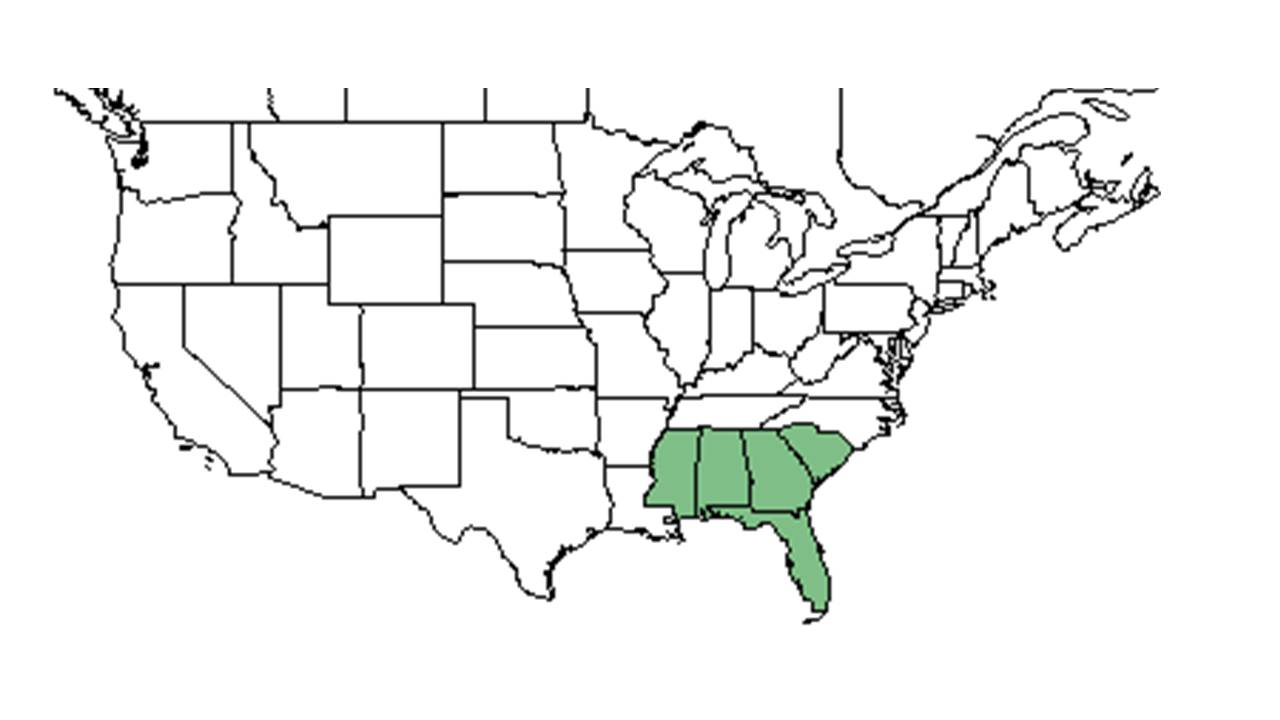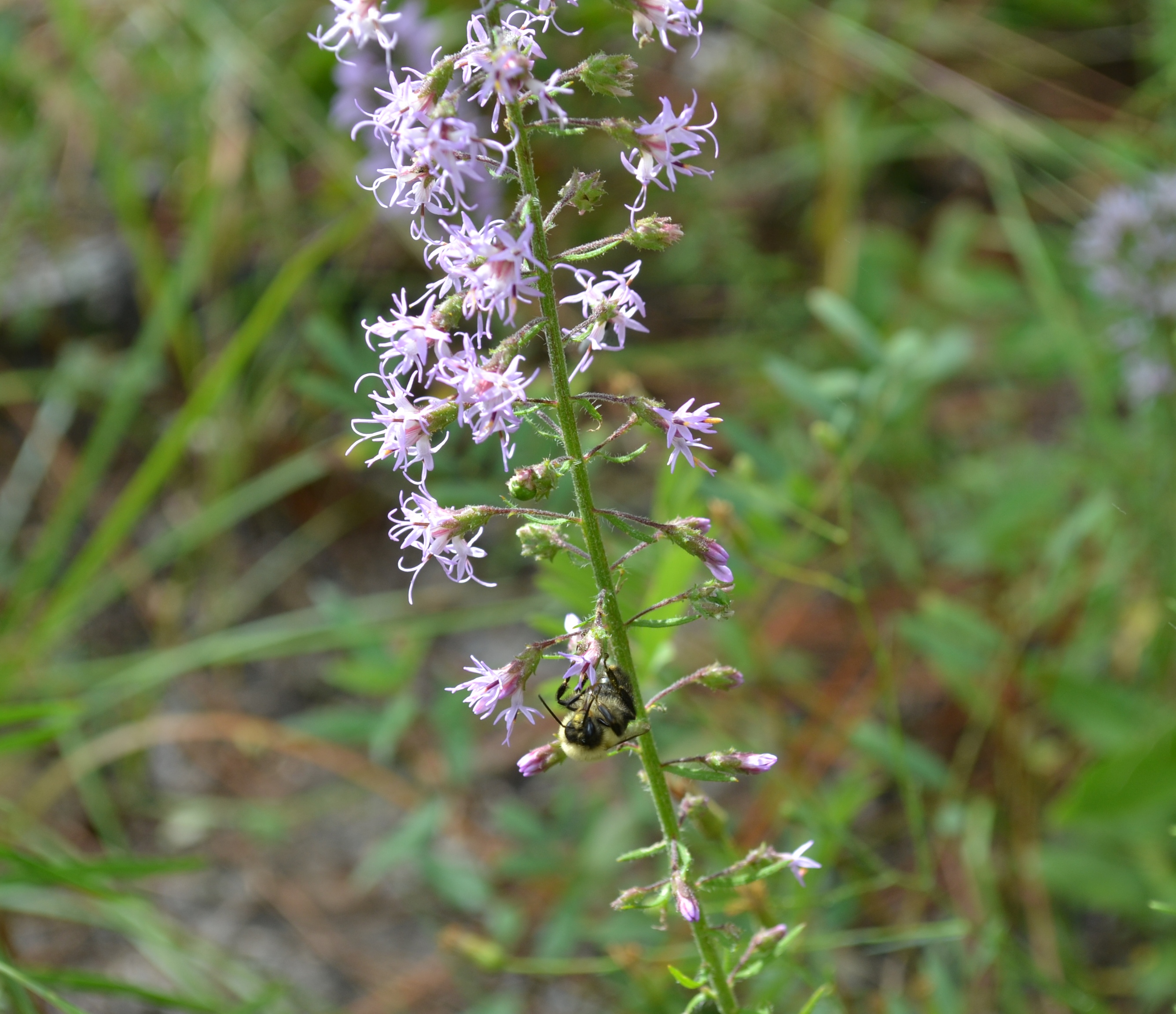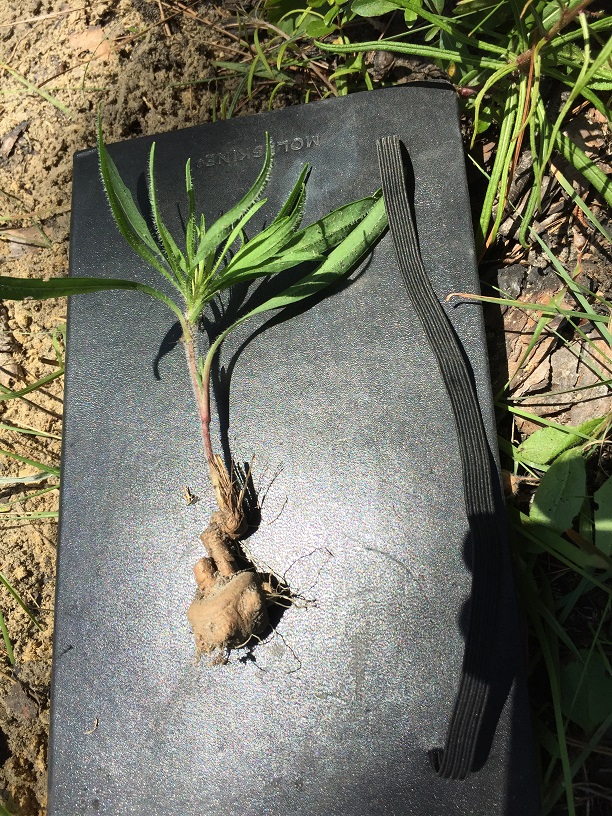Difference between revisions of "Liatris gracilis"
Emmazeitler (talk | contribs) (→Taxonomic notes) |
Emmazeitler (talk | contribs) (→Distribution) |
||
| Line 30: | Line 30: | ||
==Distribution== | ==Distribution== | ||
| + | This plant ranges from Southern Carolina, south to southern Florida, and west to Mississippi.<ref name="weakley">Weakley, A.S. 2015. Flora of the southern and mid-atlantic states. Working Draft of 21 May 2015. University of North Carolina at Chapel Hill, Chapel Hill, North Carolina.</ref> | ||
| + | |||
==Ecology== | ==Ecology== | ||
===Habitat=== <!--Natural communities, human disturbed habitats, topography, hydrology, soils, light, fire regime requirements for removal of competition, etc.--> | ===Habitat=== <!--Natural communities, human disturbed habitats, topography, hydrology, soils, light, fire regime requirements for removal of competition, etc.--> | ||
Revision as of 17:04, 22 September 2020
| Liatris gracilis | |
|---|---|

| |
| Photo taken by Gil Nelson | |
| Scientific classification | |
| Kingdom: | Plantae |
| Division: | Magnoliophyta - Flowering plants |
| Class: | Magnoliopsida – Dicotyledons |
| Order: | Asterales |
| Family: | Asteraceae ⁄ Compositae |
| Genus: | Liatris |
| Species: | L. gracilis |
| Binomial name | |
| Liatris gracilis Pursh | |

| |
| Natural range of Liatris gracilis from USDA NRCS Plants Database. | |
Common name: Slender blazing star
Contents
Taxonomic notes
Synonyms: Laciniaria laxa Small; Laciniaria gracilis (Pursh) Kuntze.[1]
Varieties: none.[1]
Description
A description of Liatris gracilis is provided in The Flora of North America. Liatris gracilis is a perennial herbaceous species.
Distribution
This plant ranges from Southern Carolina, south to southern Florida, and west to Mississippi.[1]
Ecology
Habitat
L. gracilis occurs in moist to dry loamy sand, sandy loam, or sandy clayey soils. [2] It can be found in longleaf pine-wiregrass flatwoods communities, mixed oak-pine woodlands, oak scrub, grasslands, sandhills, limestone outcroppings, and dry hammocks. [2] However, it can also be found in disturbed areas including roadsides, clear-cuts, waste ground, power line corridors, and old fields. [2] Associated species include Liatris elegans, L. chapmanii, L. spicata, L. tenuifolia, Agalinis, Trichostema, Dicerandra, Pinus palutris, Pinus clausa, Carphephorus pseudoliatris, Carya, Pinus elliottii, Carphephorus odoratissimus, C. paniculatus, Chrysopsis, Chrysopsis, Eupatorium, Solidago, Palafoxia, Aristida stricta, Myrica, Quercus virginiana, Serenoa repens, Pityopsis graminifolia var. graminifolia, Xyris, Andropogon, and Sporobolus floridanus. [2]
Liatris gracilis is frequent and abundant in the Clayhill Longleaf Woodlands community type as described in Carr et al. (2010).[3]
Phenology
L. gracilis has been observed flowering in January and July through November, while fruiting has been observed in September through November.[2][4]
Seed dispersal
This species is thought to be dispersed by wind. [5]
Fire ecology
This species occurs in habitat that is maintained by frequent or annual fire. [2]
Conservation and management
Cultivation and restoration
Photo Gallery
References and notes
- ↑ 1.0 1.1 1.2 Weakley, A.S. 2015. Flora of the southern and mid-atlantic states. Working Draft of 21 May 2015. University of North Carolina at Chapel Hill, Chapel Hill, North Carolina.
- ↑ 2.0 2.1 2.2 2.3 2.4 2.5 Florida State University Robert K. Godfrey Herbarium database. URL: http://herbarium.bio.fsu.edu. Last accessed: June 2014. Collectors: E. S. Ford, R.K. Godfrey, Loran C. Anderson, John Morrill, E. L. Tyson, Kurt E. Blum, D. B. Ward, Gary R. Knight, C. Jackson, H. A. Davis, Samuel B. Jones, Paul L. Redfearn, Jr., R. Kral, Almut G. Jones, Victoria I. Sullivan, R L Lazor, Olga Lakela, J. P. Gillespie, James D. Ray, Jr., Donald G. Randolph, Sidney McDaniel, J. B. Nelson, B. Cooper, Wendy Caster, Kurt E. Blum, John D. Lazor, Wilson Baker, A. F. Clewell, Roy Komarek, E. V. Komarek, T. MacClendon, Boothes, and Chris VanDerpoel. States and Counties: Florida: Alachua, Bay, Calhoun, Citrus, Clay, Columbia, Dade, Dixie, Escambia, Flagler, Franklin, Gadsden, Gulf, Hillsborough, Jackson, Jefferson, Lafayette, Leon, Liberty, Madison, Nassau, Okaloosa, Orange, Pasco, Polk, Santa Rosa, St Johns, Taylor, Union, Wakulla, Walton, and Washington. Georgia: Thomas.
- ↑ Carr, S.C., K.M. Robertson, and R.K. Peet. 2010. A vegetation classification of fire-dependent pinelands of Florida. Castanea 75:153-189.
- ↑ Nelson, G. PanFlora: Plant data for the eastern United States with emphasis on the Southeastern Coastal Plains, Florida, and the Florida Panhandle. www.gilnelson.com/PanFlora/ Accessed: 12 DEC 2016
- ↑ Kirkman, L. Katherine. Unpublished database of seed dispersal mode of plants found in Coastal Plain longleaf pine-grasslands of the Jones Ecological Research Center, Georgia.

